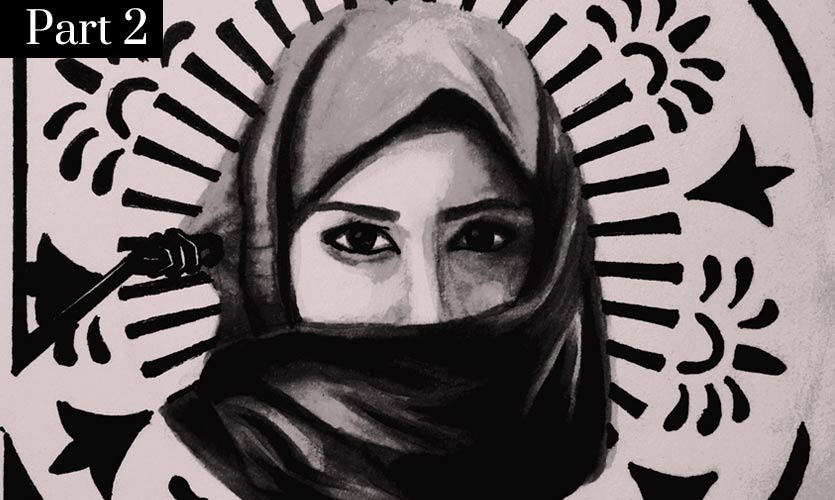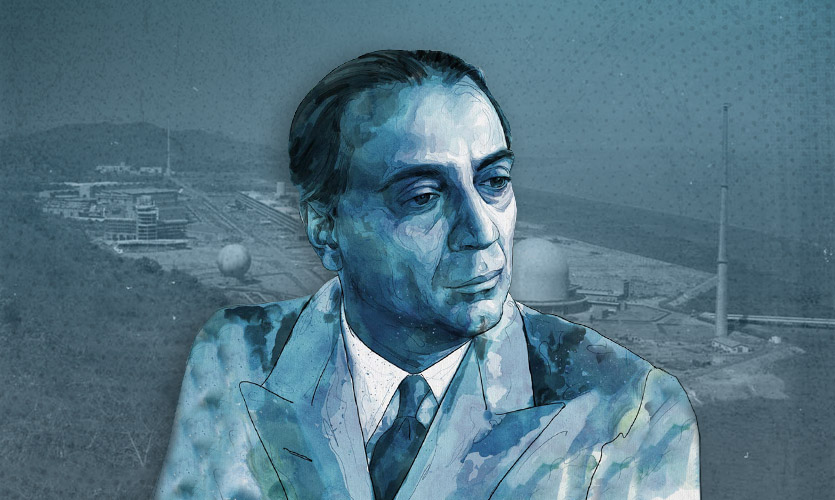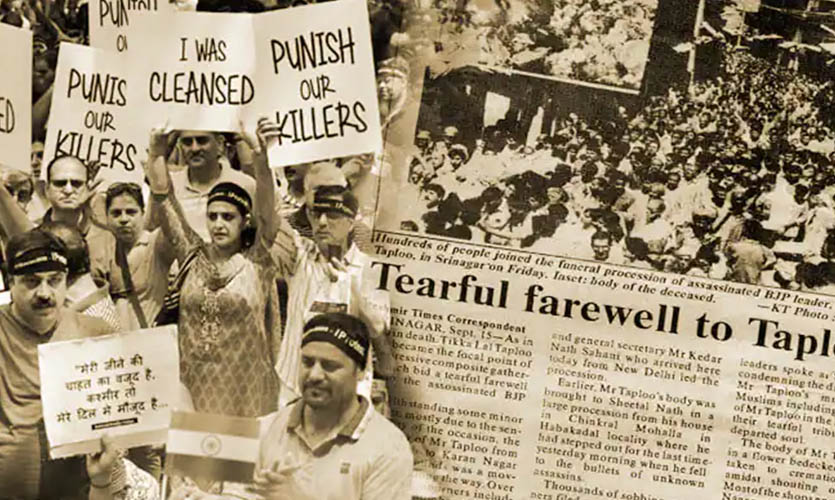For many Muslim women, the hijab has become an identity. On the one hand, some feminists identify social pressures, stemming from within the cultural group as the reason why so many Muslim women choose to wear the Hijab. On the other hand, Muslim women argue that wearing the hijab gives them a distinct identity; one that is free from the pressures faced by western women to look and be a certain way. This certain way, defined by the media and the cosmetics industry, places unattainable beauty standards for women. Many Muslim women perceive these standards as a tool of enslavement of western women.
In support of these arguments feminists such as Eve Ensler have stated that the oppression of women all around the world is exactly the same. The author of the celebrated “Vagina Monologues” said,
“I think that the oppression of women is universal. I think we are bonded in every single place of the world. I think the conditions are exactly the same [her emphasis]. I think the nature of the oppression–whether it’s acid burning in one country, or female genital mutilation in another, or gang rapes in the parking lots in high schools of the suburbs–it’s the same idea. . . . The systematic global oppression of women is completely across the globe.”
Arguments of this nature, silence any debate on the hijab. Whether the hijab is truly a tool of oppression against women can never be answered if western feminists use too much moral relativism. To state that women in majority Muslim countries face the same oppression as the women is western liberal societies is false equivalency. Consider Saudi Arabia, a country where women must be fully veiled at all times in public, must be accompanied by either a brother, father or husband, and where women do not even have the right to drive a vehicle. In contrast, women in western liberal societies face a different kind of gender discrimination ranging from sexism at work place and unequal pay, to societal pressures on appearance. However, there is stark distinction between these two kinds of gender discrimination.
Rights to roam around freely in public, freedom to choose your own husband or the freedom of choice when it comes to wearing or not wearing the hijab are all fundamental rights. There is a reason why feminist theories have three waves, it is because western women have already achieved their fundamental rights from voting to owning property. The struggles of western women are hence different from those struggles faced by many Muslim women, to argue otherwise puts constraints on understanding the ban on hijab in many Western European countries.
***
This type of feminism, which puts gender discrimination of women all around the world on the same moral ground, also promotes the hijab in the name of multicultural tolerance. This is reflected in attempts such as the World Hijab Day where non-muslim women wear the hijab. Asra Nomani, a Muslim author and activist criticises this phenomenon in a brilliantly articulated piece called “As Muslim women, we actually ask you not to wear the hijab in the name of interfaith solidarity.” The author, who is part of the Muslim Reform Movement which advocates equal rights for women wrote,
“We reject this interpretation that the ‘hijab’ is merely a symbol of modesty and dignity adopted by faithful female followers of Islam.”
In December 2015, World Hijab Day was celebrated in the US, where non-muslim women wore the hijab to showcase their support towards muslim women who wear the hijab. The effort was a collaboration between Nazma Khan, a Bangladeshi American headscarf business owner, and Ahlulbayt – a Shiite proselytizing TV station. Nomani cited a news media outlet describing the hijab as being “a symbol of modesty and dignity,” and another showing a photo of non-muslim women wearing headscarves and smiling, the article titled “Interfaith leaders urge Utahns to wear head coverings or other symbols in support of Muslims.”
Asra Nomani criticised the World Hijab Day for being a systematic effort made by conservative muslims to merge politics with Islam— an ideology commonly known as Islamism. The aim of political Islam is to legitimise the hijab as a “virtual sixth pillar of Islamic faith”. A skilfully designed tactic, codified by state and non-state actors such as Saudi Arabia, Iran, Taliban, and IS has made the popular understanding of the Arabic word hijab synonymous with the secular word headscarf. The eight times that the hijab is mentioned in the Quran, it never once means headscarf. She explains that the headscarf is called the Tarha, the hijab on the other hand means barrier, curtain or wall of separation between the believers of the Islamic faith and the non-believers.
Nomani describes the Iranian Revolution, as the beginning of a movement led by Saudi clerics and a minority Shiite sect to systematically legitimise the hijab as an important symbol of a good, practicing and modest Muslim woman. She cites several distinguished theologians who have discredited the necessity of Muslim women to wear the headscarf or cover their hair. Ultimately, Nomani argues that it is the right of women to choose whether or not they want to wear the headscarf.
In extension to Nomani’s argument, it would be useful to glance at the history of countries such as Egypt, Iran and Afghanistan. The hijab as symbol of a Muslim women’s personality cannot have been so deeply rooted. For instance, at the infancy of independent Egypt there were tensions between the Muslim Brotherhood and the Free Officers. In one such instance of negotiations between the Egyptian president Gamal Abdel Nasser and The Muslim Brotherhood, the head of the religious faction demanded that the state impose headscarf on all Egyptian women. In a speech given in 1953, Nasser ridiculed this demand made by the Brotherhood. He said, “If I make that a law, they will say that we have returned to the days of Al-Hakim bI-Amr Allah, who forbade people from walking at day and only allowed walking at night.” Suggesting that the practice was ancient, he tells the audience, that he asked the head of the Muslim Brotherhood whether his own daughter covered her hair, to this his response is negative. Nasser replies, “If you are unable to make one girl – who is your daughter, wear the tarha, you want me to put a tarha on ten million women?”
This thought provoking speech, enables a new debate on the headscarf and its relevance in a Muslim society. Lawrence Wright, Staff writer for the New Yorker, brilliantly sums up the problem. He writes,
“Nasser’s political dream was of pan- Arab socialism, modern, egalitarian, secular and industrialized, in which individual lives were dominated by the overwhelming presence of the welfare state… the Islamists wanted to completely re-shape society from the top down, imposing Islamic values on all aspects of life, so that every Muslim could achieve his purest spiritual expression. That could be accomplished only through a strict imposition of the Shari’a, the legal code drawn from the Quran and the sayings of the Prophet Mohammad, which governs all parts of life.”
Today almost 90 percent of Egyptian women wear the hijab. The extent to which the practice of covering one’s head has been normalized is evidence of the politicizing nature of the same. Another case in point, is the mandatory veiling of women in Iran after the Iranian Revolution. Before the revolution, headscarves were not mandatory. A compulsory dress code became a state law only after Ayatollah Khomeini came to power in 1979. The Revolutionary Guard – the Iranian counterpart of the Saudi Arabia religious police, patrol the streets to make sure women are following the strict attire.
***
The debate on the hijab has rekindled an interest in ideas and value systems which we have normalized for decades. The concept of citizenship is under serious scrutiny within the context of the hijab ban in Western European countries. Liberal societies have banned the hijab in the name of secularism. So we must ask a few questions. For one, what is the extent to which a state must interfere in the personal choices of its citizens? Overlapping values such as freedom of religion and freedom of expression should be concretely outlined, so that the state may be able to find solutions to this complex issue. The rights of women must also be taken into consideration while addressing this debate.
However, in order to do so, a thorough investigation must be done to understand the history of the hijab, the headscarf and the practice of covering a woman’s head. Does history tell us that the hijab is being used as a tool of oppression or emancipation? Only when we are able to find a concrete answer to this question, can we truly give women the right to choice. The ability to choose whether or not to wear the hijab, must be an informed decision. Finally, what is the role of Muslim women in a liberal society? Where do they stand within the private sphere of their culture and religion? Does this stance conflict with the role they are expected to play in a liberal state, in the public sphere? Answers to these questions are complex.
We must also understand cultural groups in the context of multiculturalism. If the state does protect the rights of minority cultural groups, what does this mean for the women within those groups? Ultimately, the headscarf which conceals a woman’s hair, paradoxically opens doors to numerous ideas and debates.
Read more: The Multicultural Perspectives On The Hijab Debate
Deep Dive is a weekly column written by Ashini Jagtiani exploring subjects that have revolutionised the socio-cultural fabric of society.










